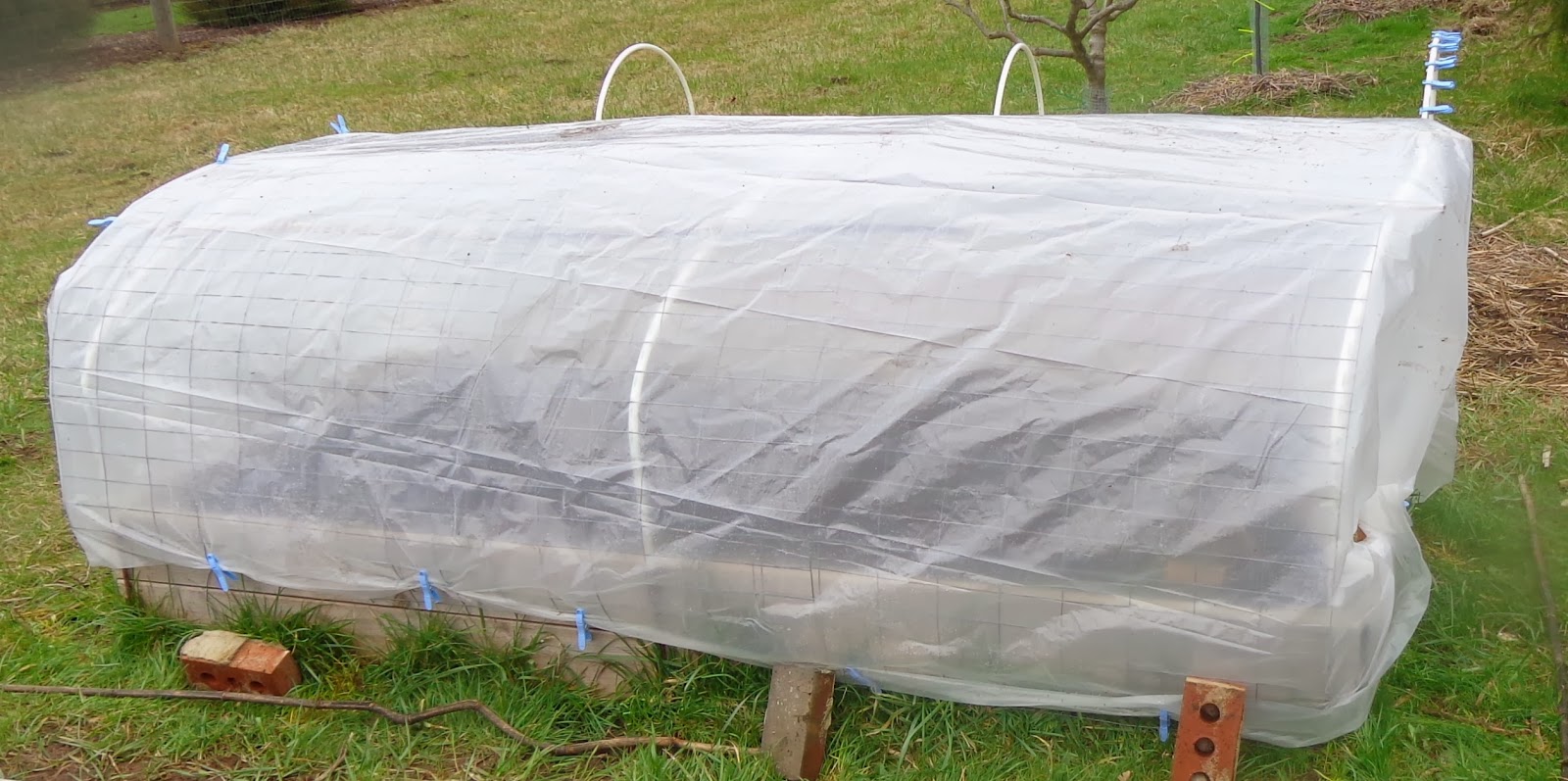Today I added a pollinator variety to the little Honeycrisp, another to the one year old Sutton's Beauty, and one to the one year old Esopus Spitzenberg. The pollinator varieties are old varieties.
I also added 3 varieties of Asian pear to the 2 year old Hosui, and 2 unknown varieties of European pear to the unknown variety of Asian pear. This is for pollination. Also I want to keep those varieties, if we move to the Battleground place. I prefer more varieties, on the trees already there, than adding more trees. We don't need a tree-full of each cultivar. Just a branch for a couple bowls of fruit when each ripens.
 |
| Graafting Supplies and Scion Wood |
Last year I did cleft grafting on existing trees. I thought I was too uncoordinated to safely do whip & tongue grafting. This time I did do whip & tongue grafting. The saddle grafts all took, and some grew surprisingly fast. But a cleft graft exposes open wound on each side, which dies and needs to be overgrown by new wood. The whip & tongue graft does not leave exposed edges, so is potentially healthier. In theory, all exposed scion cambium is matched with rootstock or branchstock cambium. That's if the cuts are skillfully done.
I found that sharpening the knife between each graft, the wood cut very steadily. I steadied my hand against my chest and mad the cuts very slowly, slicing along the blade. The biggest concern with this method is it is hazardous to the fingers of the grafter. I did get a small thumb laceration. It only needed a bandaid.
 |
| Whip and Tongue Graft on Asian Pear |
I used polyethylene wrap and treekote. Looks nice and they seem like strongly splinted grafts.
Photo is blurred but still better than my sketch. I found I had overlap of cut edge over bark. So I carefully exposed cambium by shaving that section of bark. Then it matched.
They are a little bent. They came together with the wrapping. I dipped in water so cut surfaces would not be dry.
Labels state variety name, expected ripening time, and on the back, graft date.
 |
| Wrapped snugly with polyethylene, and labeled. |
Altogether today I did 3 grafts on Hosui pear, 3 grafts on unknown Asian pear, and one each on 3 small apple trees. Then I wanted to do more but I had homework and a doctor's appointment so I quit.
Lessons learned today.
1. Grafting is not as hard as I thought. It takes practice.
 |
| Sealed with Treekote |
3. Apply bandaid to thumb before starting.
4. Work slowly, carefully. Don't try to slice quickly.
5. The whip and tongue stays together nicely and does not leave exposed surfaces.
6. Prepare labels ahead of time, with variety name, date of graft, and expected ripening time. Label each graft as it is completed.
7. Polyethylene tape is easier than wide rubber bands. It can be cut from freezer bags, although I got mine via Amazon.
8. The Treekote is easy to apply too. That was also via Amazon.
Maybe this weekend I'll graft some plums and cherries. They are considered more difficult. The grafting season is short, so I might as well do it now instead of waiting to see how the others do.




















